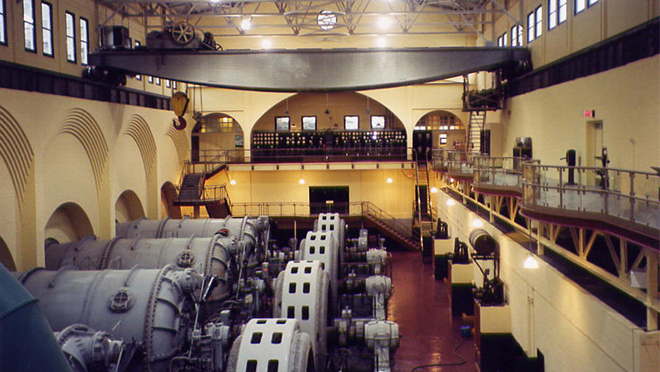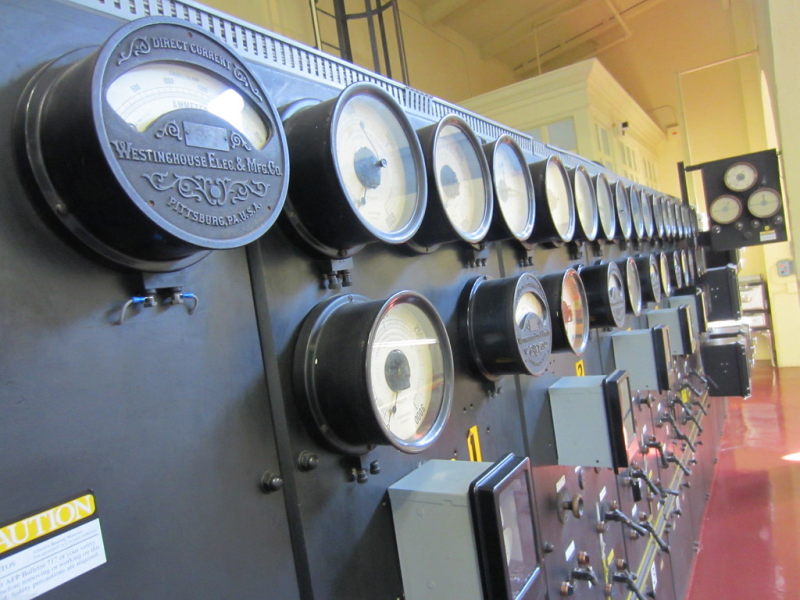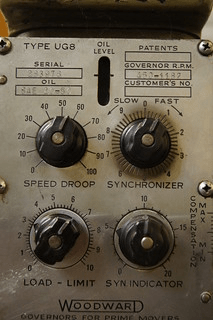Kevin8686
Electrical
- Jan 16, 2018
- 10
Hello dear fellows,
I need your help please,
A power generation plant consists of 3 steam turbines each ( 4.8 MW - 6600 V - 50 Hz ) these turbines feed a network of an oil facility which demand currently 7 MW and when all equipment it demands 11 MW but mainly demand 7 MW.
This power plant is also connected to a public grid which is 220 KV - almost 5000 MW - 50 Hz by two main breakers to the busbar.
So, now we have 4 power sources ( 3 Breakers from 3 Steam Turbines and 1 breaker from national grid as the other breaker is usually disconnected; this busbar is 6600 V - 50 Hz - 7 MW )
The 3 steam turbines are controlled by Woodward 505E, each unit is totally separated the other, No common HMI, No DCS, No Woodward 505E HMI workstation, and No power management system.
In the Configuration documents the following is noted :
Speed Control Droop Settings:
Droop % 5
Use KW Droop Yes
Gen Load Units No
The Problem :
During and after the commissioning of Woodward505E control System ( before units were controlled by pneumatic classic control system ) we suffer form the following:
Whenever we have frequency and load fluctuation at the national grid trend Breaker A1 ( Electric Shedding sys. is used and has graphs ) then immediately we suffer bad fluctuation in the output power ( Active power trend output ) of the 3 steam turbines by almost 1 MW and each Generator start producing power and decreasing power and for 1 or 2 seconds the reading of the National Grid MW become Minus (- ....)
until the operator start Rising the speed of one or two steam turbine at the same time so the output load of the 3 Generators and the feeder come to stability.
This happens multiple time a day...
And when we shut down 1 unit the network and loads are relatively stable and when we put the Two National Girds (220 KV) Feeders on the main busbar (6600) with the other units then the frequency and loads are relatively stable.
Please find attached Trends,
Please help me with your technical opinions and experience in analyzing this problem.
Kind Regards.
I need your help please,
A power generation plant consists of 3 steam turbines each ( 4.8 MW - 6600 V - 50 Hz ) these turbines feed a network of an oil facility which demand currently 7 MW and when all equipment it demands 11 MW but mainly demand 7 MW.
This power plant is also connected to a public grid which is 220 KV - almost 5000 MW - 50 Hz by two main breakers to the busbar.
So, now we have 4 power sources ( 3 Breakers from 3 Steam Turbines and 1 breaker from national grid as the other breaker is usually disconnected; this busbar is 6600 V - 50 Hz - 7 MW )
The 3 steam turbines are controlled by Woodward 505E, each unit is totally separated the other, No common HMI, No DCS, No Woodward 505E HMI workstation, and No power management system.
In the Configuration documents the following is noted :
Speed Control Droop Settings:
Droop % 5
Use KW Droop Yes
Gen Load Units No
The Problem :
During and after the commissioning of Woodward505E control System ( before units were controlled by pneumatic classic control system ) we suffer form the following:
Whenever we have frequency and load fluctuation at the national grid trend Breaker A1 ( Electric Shedding sys. is used and has graphs ) then immediately we suffer bad fluctuation in the output power ( Active power trend output ) of the 3 steam turbines by almost 1 MW and each Generator start producing power and decreasing power and for 1 or 2 seconds the reading of the National Grid MW become Minus (- ....)
until the operator start Rising the speed of one or two steam turbine at the same time so the output load of the 3 Generators and the feeder come to stability.
This happens multiple time a day...
And when we shut down 1 unit the network and loads are relatively stable and when we put the Two National Girds (220 KV) Feeders on the main busbar (6600) with the other units then the frequency and loads are relatively stable.
Please find attached Trends,
Please help me with your technical opinions and experience in analyzing this problem.
Kind Regards.




